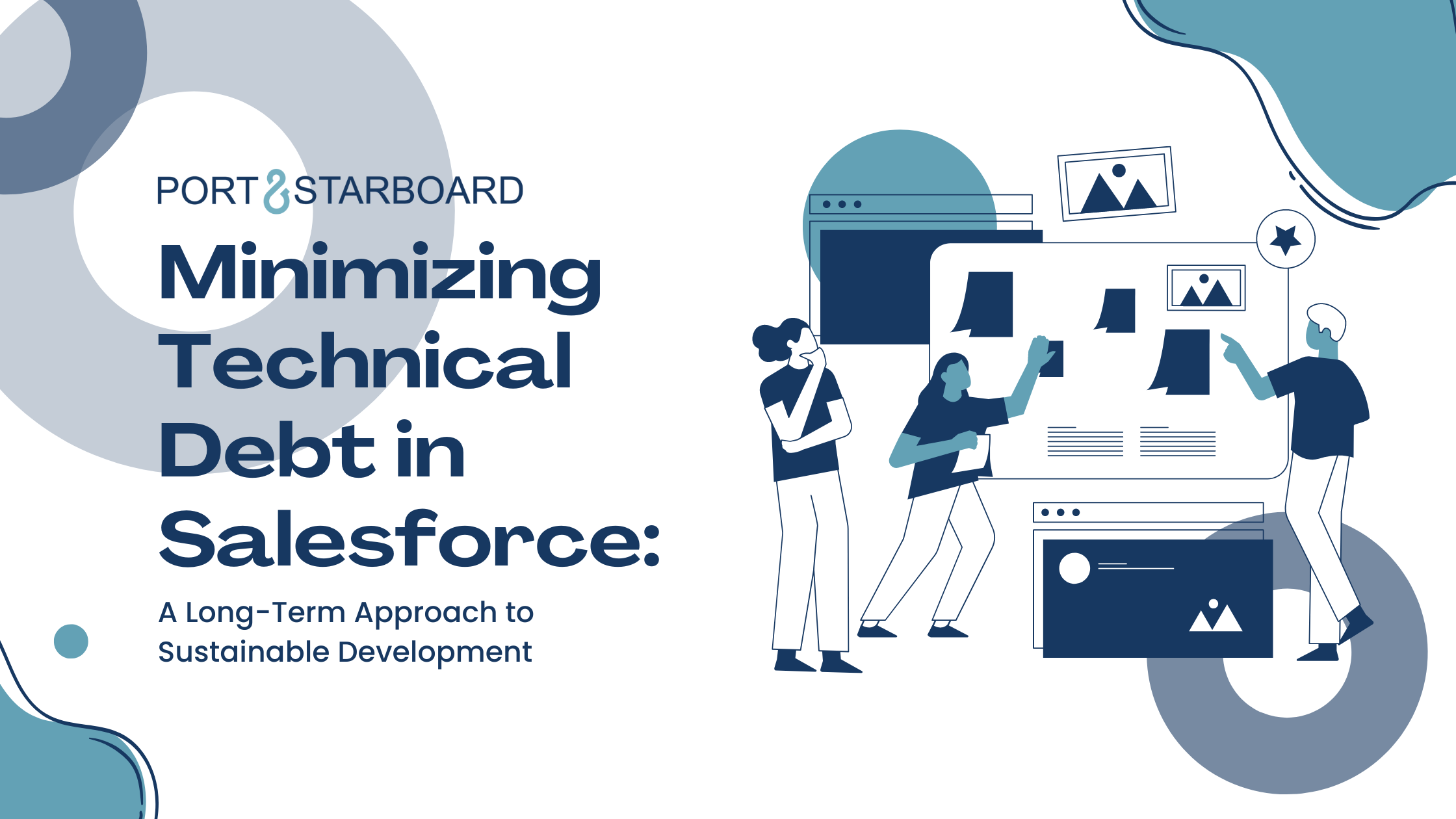In the ever-evolving world of Salesforce development, technical debt has become a prevalent issue that organizations often overlook. It refers to the accumulation of suboptimal, inconsistent or inefficient design choices that can hinder system performance, scalability, and maintainability over time. Acknowledging and addressing technical debt is crucial for long-term success and to ensure that Salesforce implementations continue to operate smoothly. Let’s delve into the concept of technical debt in Salesforce and explore strategies to minimize and address it effectively.
Have you ever worked in a system that felt “cobbled together” rather than elegantly designed? Or a system that has a lot of “processes” built into it, but all your team members hate it? That’s technical debt. We call it technical debt because, much like financial debt, it accumulates over time, and it eventually needs to be paid off.
Technical debt in Salesforce arises when development projects prioritize short-term gains or quick fixes over long-term sustainability. Its root cause is often oversimplified and inexpensive development approaches that fail to consider the future needs of the business and the evolving Salesforce ecosystem. Over time, taking shortcuts frequently lead to inefficient processes, annoying workarounds, and limitations that hinder system performance and agility.
To avoid the accumulation of technical debt, organizations should adopt a long-term approach to Salesforce development. Here are a few tips to keep in mind when coming up with your Salesforce strategy and road map.
- Prioritize Planning: Start with a comprehensive understanding of your business requirements, long-term goals, and anticipated growth. Thoroughly analyze the impact of potential design choices, customizations, and integrations to ensure they align with your strategic vision.
- Invest in Skilled Resources: Engage experienced Salesforce professionals who possess a deep understanding of the platform’s capabilities, best practices, and future roadmap. Skilled resources can help design scalable and maintainable solutions that minimize technical debt.
- Emphasize Modularity and Reusability: Design solutions with a modular approach, leveraging standard Salesforce functionality and reusable components. This allows for easier maintenance, scalability, and adaptability as business needs evolve.
- Conduct Regular Code (or Automation) Reviews: Salesforce offers features that enable development without code, so this step is often overlooked. “Code Review” in Salesforce applies to flows and other automations, as well. Implement a process for regular code reviews to ensure adherence to coding standards, best practices, and optimization techniques. Identifying and addressing issues early on can prevent technical debt from accumulating.
- Embrace an Agile Mindset: Agile methodologies, such as iterative development and continuous improvement, can help manage technical debt effectively. Regularly reassess requirements, make incremental enhancements, and leverage user feedback to iterate on the solution.
- Invest in Ongoing Training and Education: Keep your Salesforce team up-to-date with the latest platform enhancements, best practices, and emerging technologies. Encourage continuous learning and skill development to foster a culture of innovation and quality.
Technical debt in Salesforce is a common challenge that organizations must proactively address to ensure long-term success and system sustainability. Remember, the true value of Salesforce lies not just in initial implementation but in the ability to adapt and scale over time. By taking a long-term approach and prioritizing quality, organizations can minimize technical debt, reduce maintenance costs, and ensure their Salesforce instance remains a strategic asset for years to come.
If your company is struggling with technical debt or implementing any of these strategies, reach out to us! We’d love to hear about your experience and help you get back on track.




